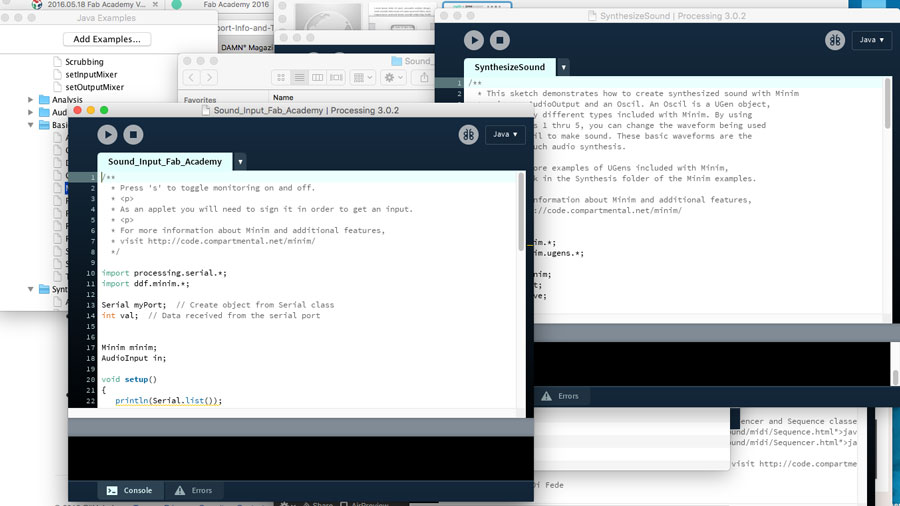
Week 16
Finally we are making interactions (through an interface) between the inputs and output boards that we've made before, it was really exiting to see things you've made come to life!
This week's subject is also related to my final project, and because I'm planning to use an interface to output, it was a very important week for me. I enjoyed it a lot!
Objectives
Write an application that interfaces with an input &/or output device.
Try as many tool options as possible.
Weekly Progress >

First, we had our weekly lecture with Neil Gershenfeld, you can watch it here.
Gian Paolo Bassi hosted this week’s lecture, we talked about The present and the future of SolidWorks.
"SolidWorks is a tool of choice of many makers and innovators all over the world, today we talk about the future of design and the trends that inspire our development strategy."
Assingment >

This week was about experimentation with different software in order to design an interface in which we can interact with inputs and outputs, so as you can imagine this was a very interesting week!

Processing
Before starting to work, I had some idea of what I wanted to try first: Sound Input. So with this in mind, I started with Processing, a software for coding in the context of visual arts; some friends have already recommended it so I was waiting for a chance to try it. I used the electret mic input, that I have already done in Input Devices Week.

My first try was with the internal mic of my computer, I thought it would be easier to make it work first with it and then set my input to serial signal from the electret mic.
And after trying for a while, I manage to finish a code that was good for what I was looking for. I use Minim library to process the signal. If you are interested in understanding digging a little bit more into Minim, you can find the documentation here.
Codes I've used:
And this is the result! I'm really happy with it! I spend a couple of hours playing with the code, I was having so much fun making it go crazy that a just didn't notice the time. I recommend you to try all the examples that Processing offers, by doing them you get an idea of what you can do.
